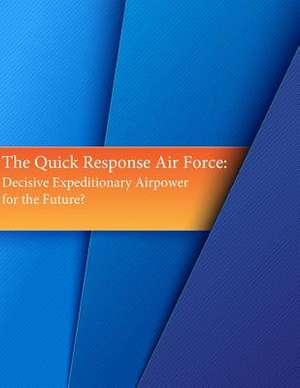The Quick Response Air Force
Autor Office of Air Force History and U. S. Airen Limba Engleză Paperback
Preț: 95.05 lei
Nou
Puncte Express: 143
Preț estimativ în valută:
18.19€ • 18.79$ • 15.13£
18.19€ • 18.79$ • 15.13£
Carte disponibilă
Livrare economică 27 februarie-13 martie
Preluare comenzi: 021 569.72.76
Specificații
ISBN-13: 9781511592826
ISBN-10: 1511592826
Pagini: 50
Dimensiuni: 216 x 279 x 3 mm
Greutate: 0.14 kg
Editura: CREATESPACE
ISBN-10: 1511592826
Pagini: 50
Dimensiuni: 216 x 279 x 3 mm
Greutate: 0.14 kg
Editura: CREATESPACE
